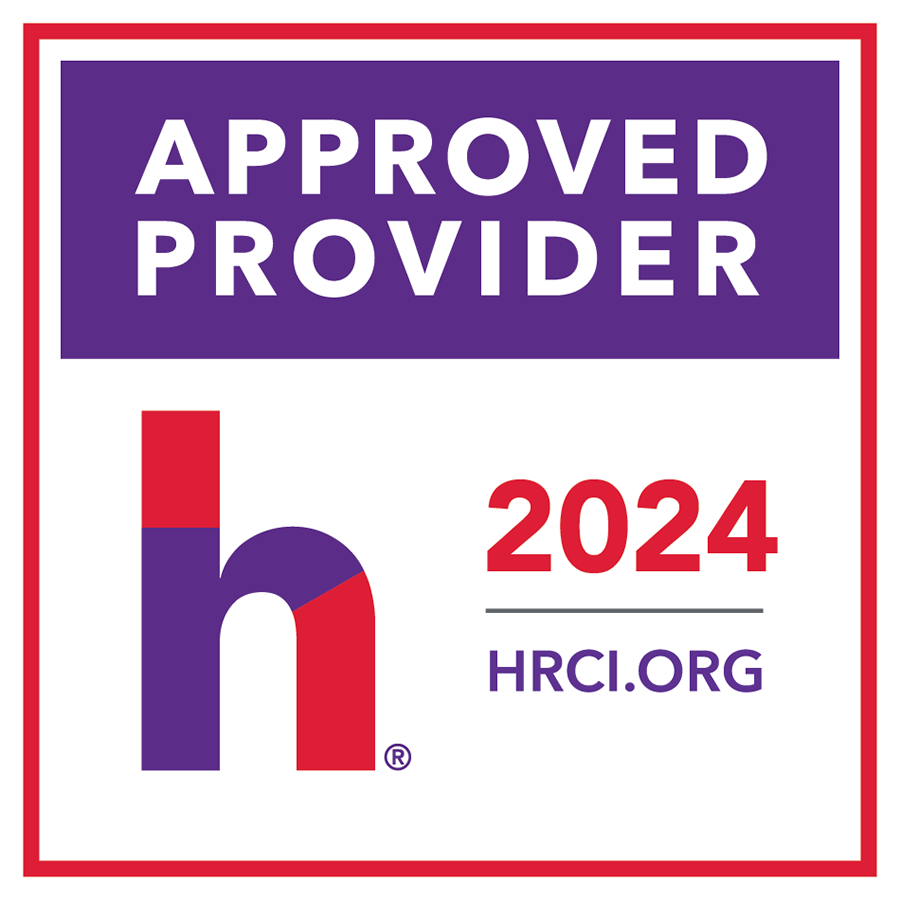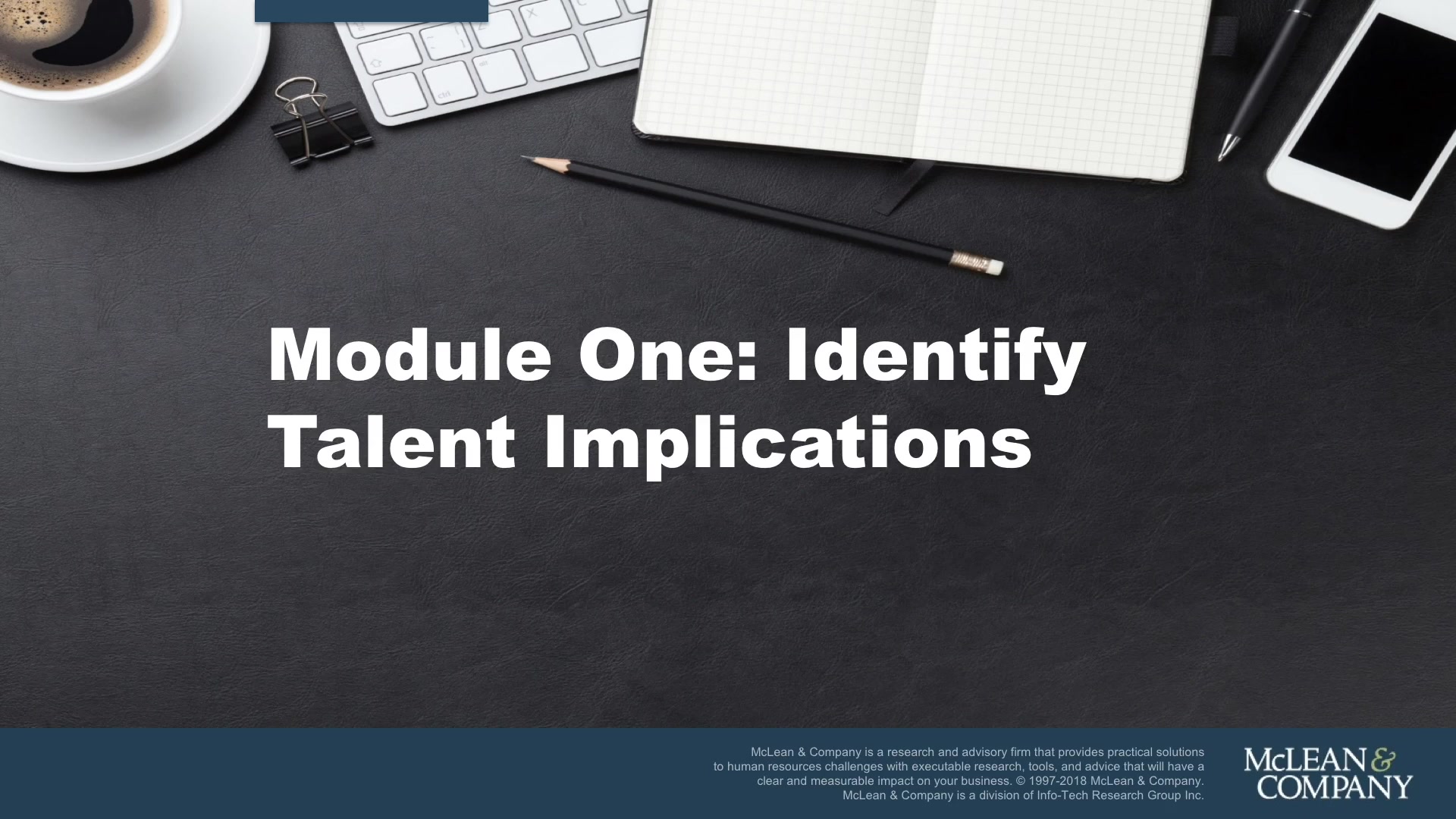- Truly understanding organizational goals, sources of competitive advantage, and critical capabilities requires a different skill set and approach than HR may be accustomed to.
- Limited resources for strategic initiatives and an ongoing commitment to deliver core HR services restrict HR’s ability to create value for organizations.
Need Extra Help?
Speak With An Analyst.
- Get on-demand project support
- Get advice, coaching, and insight at key project milestones
- Go through a Guided Implementation to help you get through your project

Our Advice
Critical Insight
- Senior leaders are demanding more strategic value from their HR departments, but are not changing the level of resources available to them.
- This means that while there are myriad effective HR programs and processes that will benefit organizations, there are not enough resources to execute even half of them well.
- HR leaders must prioritize aspects of the workforce that are critical to executing a people strategy and identify HR initiatives that will best support them.
Impact and Result
- Identifying the key talent implications required to achieve the organization’s goals enables the creation of targeted HR initiatives.
- Reviewing existing initiatives and reallocating resources to strategically aligned activities will make the most out of limited resources, while helping to build the case for additional resources.

Talent Strategy

This program has been approved for continuing professional development (CPD) hours under Section A of the Continuing Professional Development (CPD) Log of the Human Resource Professionals Association (HRPA).

McLean & Company is recognized by SHRM and can award Professional Development Credits (PDCs) for the SHRM-CP® or SHRM-SCP®.

HR Certification Institute's® (HRCI®) official seal confirms that McLean & Company meets the criteria for pre-approved recertification credit(s) for any of HRCI’s eight credentials, including SPHR® and PHR®.
How to complete this course:
Use these videos, along with the Project Blueprint deck above, to gain an understanding of the subject. Start with the Introduction, then move through each of the Course Modules. At the end of each Module, you will be required to complete a short test to demonstrate your understanding. You will complete this course when you have completed all of the course tests.
- Number of Course Modules: 5
- Estimated Completion Time: 1.5 hours
Learning Outcome
Lead the HR function through a process that will create a talent strategy that targets the specific talent attributes needed to achieve the strategic aims of the organization.
Learning Objectives
By the end of this course, learners will be able to:
- Identify the critical aspects of an organization’s direction needed to create a talent strategy.
- Create strategic pillars and HR outcomes that will help the organization achieve its goals.
- Prioritize HR initiatives that will have the greatest impact on the organization.
- Communicate effectively throughout the process so all major stakeholders are aware of and informed about the talent strategy.
Course Modules

Introduction

Module 1

Module 2

Module 3

Module 4
Workshop: Create a People Strategy
Workshops offer an easy way to accelerate your project. If you are unable to do the project yourself, and a Guided Implementation isn't enough, we offer low-cost delivery of our project workshops. We take you through every phase of your project and ensure that you have a roadmap in place to complete your project successfully.
Module 1: Review Organizational Strategy and Identify HR Implications
The Purpose
- Gain an understanding of the organization’s strategy and objectives.
- Determine the importance of aligning the people strategy to the overall organizational strategy.
Key Benefits Achieved
- A thorough review of the organization’s current state.
- A deep dive into overall organizational strategy and objectives.
Activities
Outputs
Review organizational strategy
- Strategic review summary
Conduct a SWOT analysis.
- SWOT summary
Understand HR implications
- Talent themes
Module 2: Debrief Stakeholder Feedback and Identify Talent Implications
The Purpose
- Identify talent implications that holistically cover the organization’s overall requirements, effects, and consequences on talent.
- Derive high-level themes which will steer the HR strategic pillars forward.
Key Benefits Achieved
- An understanding of the talent implications on talent segments, competencies, culture, compliance, data, core processes, talent sources.
- The involvement of key stakeholders in the identification of talent implications will support leadership buy-in.
Activities
Outputs
Debrief HR Stakeholder Management Survey
- HRSM survey results
Identify talent implications
- Talent implications
Determine themes from implications
Module 3: Validate Priorities and Define Strategic Pillars
The Purpose
Define the overarching prioritized themes that will become the strategic pillars for the people strategy.
Key Benefits Achieved
Identification of the strategic pillars that will allow HR to focus on key prioritized areas.
Activities
Outputs
Prioritize talent implication themes
- Prioritized talent implication themes
Create strategic pillars
- Strategic pillars
Module 4: Define HR Outcomes and Assess HR’s Ability to Support Outcomes
The Purpose
- Determine the outcome and impact the strategic pillars can have on the organization.
- Identify specific HR deliverables and initiatives required to achieve the outcomes.
Key Benefits Achieved
- The identification of the ideal state of HR that would support each strategic pillar.
- The determination of current state gaps that need to be addressed.
- The understanding of how HR initiatives can drive the people strategy.
Activities
Outputs
Create HR outcomes
- HR outcomes
Assess HR’s ability to support HR outcomes
Identify initiatives to deliver HR outcomes
Module 5: Create Initiatives and an Action Plan
The Purpose
- Identify the accountabilities of responsibilities of HR initiatives.
- Finalize the people strategy.
Key Benefits Achieved
- A detailed profile for each HR initiative.
- An action plan to integrate and communicate the people strategy.
Activities
Outputs
Finalize initiatives
- HR initiatives
Develop action plan
- Action plan
Create a people strategy timeline
- People strategy presentation
 Effectively Manage HR's Work
Effectively Manage HR's Work
 HR Trends Report 2024
HR Trends Report 2024
 The Future of HR
The Future of HR
 What It Means to Become a Skills-Based Organization
What It Means to Become a Skills-Based Organization
 Create a People Strategy
Create a People Strategy
 Optimize HR Department Costs
Optimize HR Department Costs
 Preparing for an Internal Talent Marketplace
Preparing for an Internal Talent Marketplace
 Customize HR Programs for a Global Workforce
Customize HR Programs for a Global Workforce
 Prepare for External Risks
Prepare for External Risks
 Effectively Manage the People Aspects of Mergers and Acquisitions
Effectively Manage the People Aspects of Mergers and Acquisitions
 Develop Business Continuity Management Response Plans
Develop Business Continuity Management Response Plans
 Redeploy Your Workforce During a Crisis
Redeploy Your Workforce During a Crisis
 The Complete Manual for Layoffs
The Complete Manual for Layoffs
 HR Organizational Alignment Diagnostic Guide
HR Organizational Alignment Diagnostic Guide
 HR Management & Governance Diagnostic Guide
HR Management & Governance Diagnostic Guide
 Neuroscience and HR
Neuroscience and HR